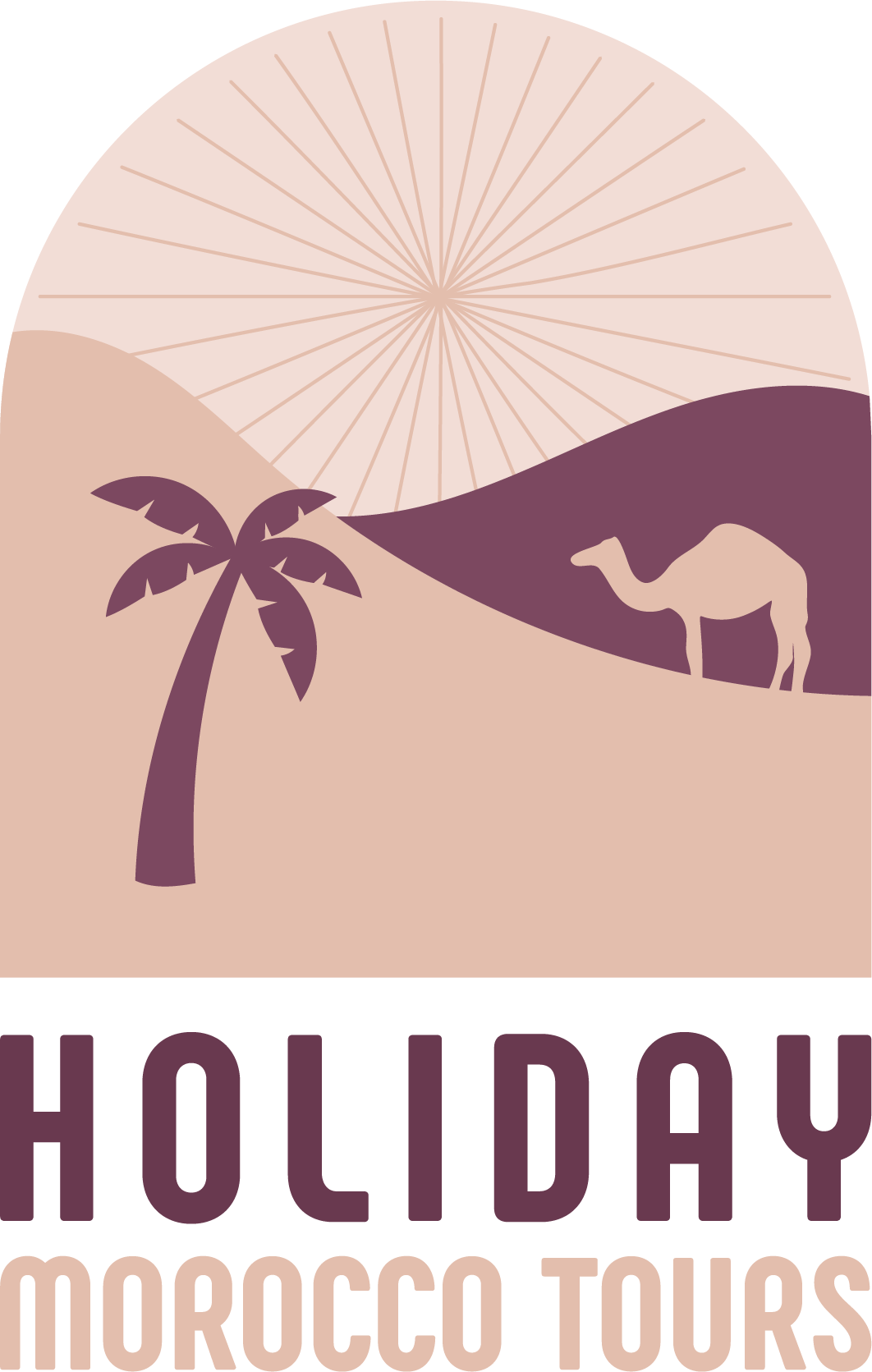Moroccan Zellij: The Timeless Art of Geometric Mastery
Moroccan zellij is one of the most iconic elements of Moroccan architecture, instantly recognizable for its vibrant colors, intricate geometric patterns, and remarkable craftsmanship. This traditional mosaic art transforms mosques, palaces, riads, and public fountains into stunning visual masterpieces, reflecting centuries of cultural heritage, artistic innovation, and mathematical precision.
Zellij is more than decoration; it embodies spiritual symbolism, cultural identity, and architectural genius. Artisans carefully hand-cut small glazed tiles into shapes like squares, triangles, and stars, then assemble them into complex patterns that are both structurally precise and aesthetically mesmerizing. From the imperial cities of Fes, Marrakech, Meknes, and Rabat to remote kasbahs, zellij mosaics serve as a testament to Morocco’s rich artistic and cultural legacy.
Travelers can admire exquisite examples in sites such as the Bou Inania Madrasa in Fes, the Ben Youssef Madrasa in Marrakech, and numerous palaces and riads across Morocco. Understanding Moroccan zellij offers visitors a unique glimpse into the fusion of artistry, geometry, and history that defines the country’s architectural heritage.
In this article, we will explore the history, techniques, symbolism, and famous examples of Moroccan zellij, revealing why it remains a cornerstone of The Art of Decoration in Moroccan Architecture.
History and Origins of Moroccan Zellij
The origins of Moroccan zellij date back to the 12th century, during the Almoravid and Almohad dynasties, when Islamic geometric art began influencing Moroccan architecture. This art form was inspired by Andalusian mosaic techniques brought to Morocco by artisans fleeing Spain after the Reconquista. Over time, Moroccan craftsmen refined these methods, developing a distinctive style characterized by intricate geometric patterns, vibrant colors, and precise mathematical arrangements.
Zellij was traditionally used in religious, royal, and civic architecture, adorning mosques, madrasas, palaces, and public fountains. The craft symbolized not only aesthetic beauty but also spiritual and cultural values, reflecting harmony, order, and devotion. Cities like Fes and Marrakech became centers of zellij craftsmanship, where generations of artisans perfected cutting, shaping, and assembling tiles by hand.
The continued use and preservation of Moroccan zellij today highlight its significance as a cultural and historical treasure, connecting modern visitors with centuries of artistic innovation. Travelers can experience this living heritage firsthand on tours such as the Imperial City Tour from Fes, where zellij mosaics embellish grand palaces, madrasas, and courtyards.
Techniques and Craftsmanship of Moroccan Zellij
The creation of Moroccan zellij is a meticulous and highly skilled process, requiring both artistic vision and mathematical precision. Artisans begin by selecting small, hand-cut glazed tiles, known as fells, which are then shaped into geometric forms such as squares, triangles, and stars. Each piece is carefully arranged by hand into intricate patterns, forming a seamless mosaic that is both structurally sound and visually captivating.
A defining feature of Moroccan zellij is its geometric complexity, which reflects the influence of Islamic art principles. Patterns are often symmetrical and repetitive, creating a sense of harmony, order, and spiritual symbolism throughout the architecture. In sites like the Bou Inania Madrasa in Fes or the Ben Youssef Madrasa in Marrakech, visitors can see zellij mosaics adorning walls, fountains, floors, and even ceilings, showcasing the versatility and artistic mastery of Moroccan craftsmen.
The art of zellij is traditionally passed down through generations, with apprentices learning both cutting techniques and the principles of geometric design from experienced masters. This ensures that each mosaic maintains the authenticity, precision, and cultural significance that has defined Moroccan decorative arts for centuries. Travelers seeking an immersive experience can witness this craftsmanship firsthand on tours such as the Imperial City Tour from Fes, where zellij remains a living, functional, and decorative heritage.
Symbolism and Cultural Significance of Moroccan Zellij
Moroccan zellij is more than a decorative element; it carries deep cultural, spiritual, and historical meaning. Its geometric patterns symbolize infinity, unity, and the interconnectedness of life, reflecting the Islamic principles of order and divine harmony. Every star, polygon, and interlocking shape tells a story of mathematical precision and spiritual reflection, turning walls, floors, and fountains into contemplative spaces.
Zellij also represents Morocco’s rich cultural heritage and craftsmanship. The vibrant colors, patterns, and textures reflect centuries of Berber, Arab, and Andalusian influences, making each mosaic a visual record of Morocco’s artistic and cultural evolution. Sites such as the Bou Inania Madrasa in Fes, the Ben Youssef Madrasa in Marrakech, and numerous palaces and riads across Morocco allow visitors to experience the symbolic and aesthetic power of zellij firsthand.
By exploring Moroccan zellij, travelers gain insight into how art, architecture, and culture converge. Each mosaic not only beautifies a space but also communicates a story of identity, spirituality, and creative excellence, making zellij an essential part of The Art of Decoration in Moroccan Architecture. Tours like the Imperial City Tour from Fes provide an opportunity to witness these masterpieces in their authentic historical and cultural context.
Types of moroccan zellij
Hatim zellij:
Hatim Zellij is one of the most iconic Moroccan mosaic styles, featuring interlocking stars and polygonal shapes. It is commonly found in mosques, palaces, and madrasas, where the intricate geometric patterns symbolize infinity, unity, and divine harmony. Visitors can admire stunning examples in the Bou Inania Madrasa in Fes, where Hatim Zellij covers walls and fountains with mesmerizing precision.
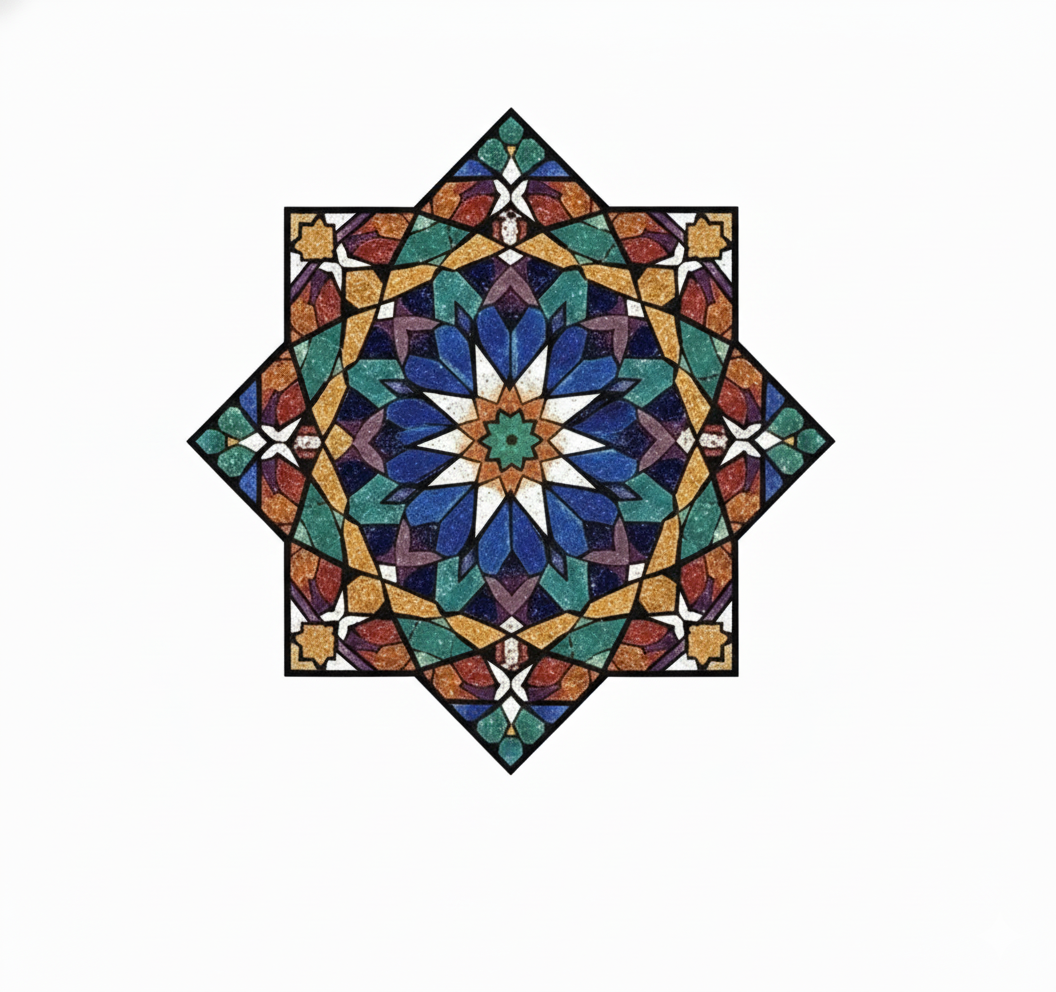
luzza zellij:
Luzza is known for its dense and highly detailed patterns, created with smaller tiles to allow for intricate mosaics. This style is often used in courtyards, fountains, and decorative panels, showcasing Moroccan artisans’ skill in combining geometry and color. In Marrakech, Luzza can be seen in historic riads and palaces, adding depth and texture to architectural spaces.

saft zellij
Saft features linear and repetitive arrangements, creating bold visual rhythm along walls and floors. This type of zellij emphasizes symmetry and balance, making it ideal for doorways, floors, and elongated panels. Travelers exploring Fes and Meknes can observe Saft in medina gates, riads, and palaces, where the clean lines enhance the overall harmony of the space.
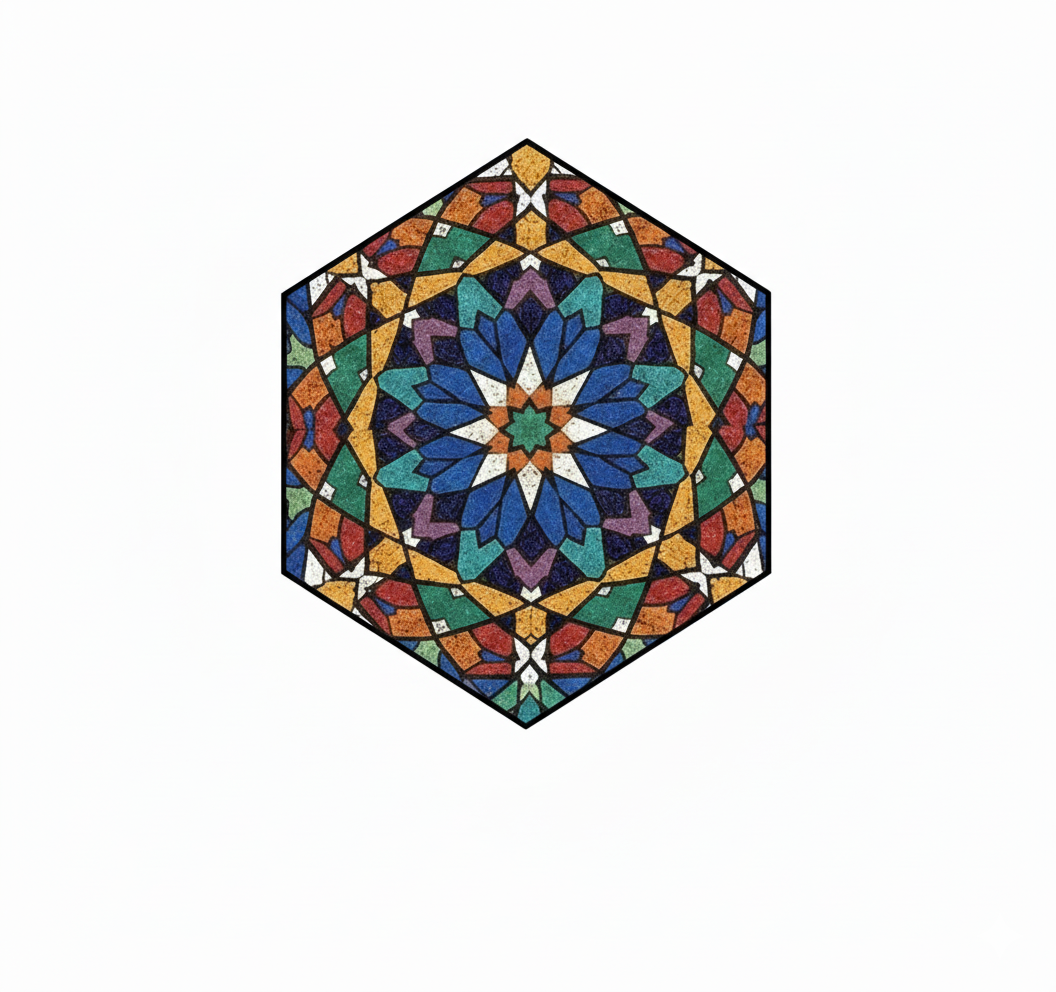
mharra
Mharra incorporates diamond and lozenge shapes, producing dynamic and visually engaging mosaics. Often used for flooring or decorative wall panels, Mharra adds movement and dimension to Moroccan interiors. Palaces in Meknes and Fes feature beautiful Mharra patterns, demonstrating the craftsmanship and creativity of Moroccan artisans.
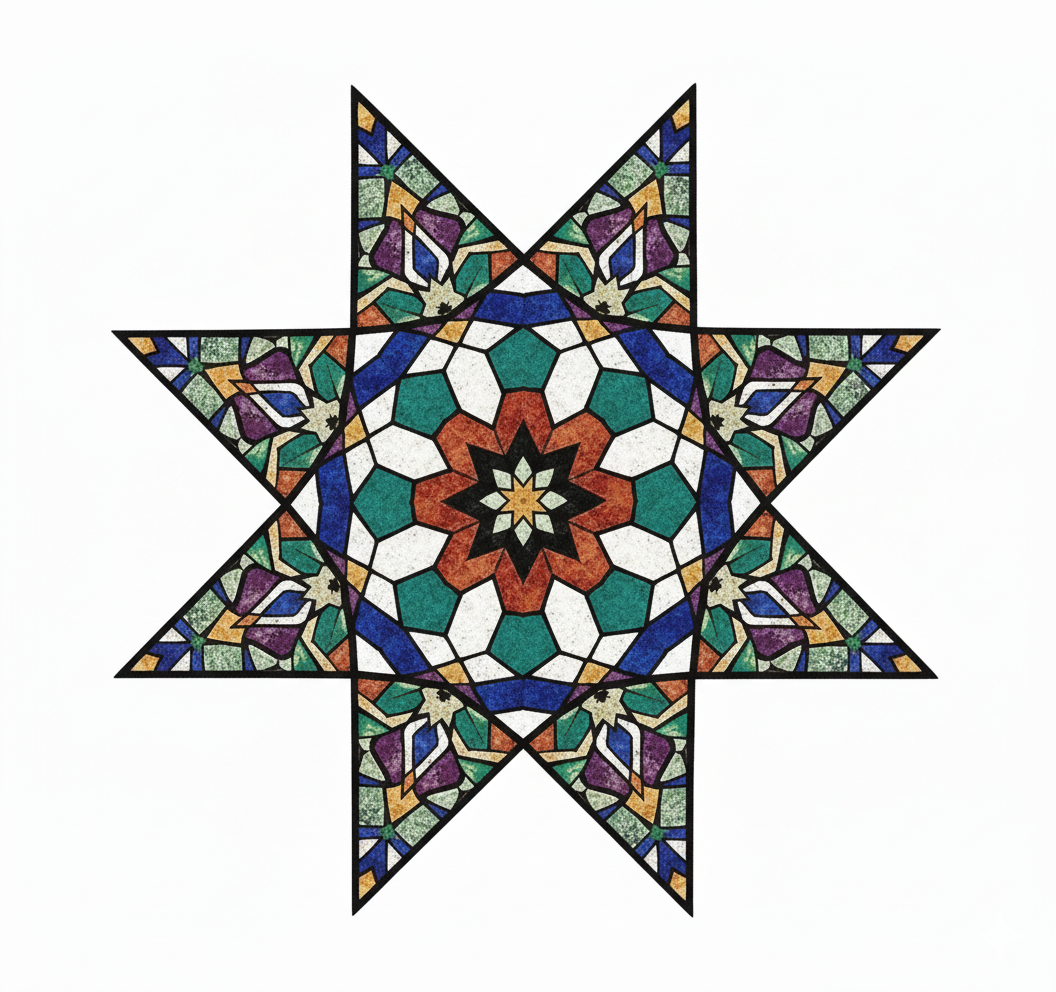
kwayra
Kwayra is characterized by curved motifs and flowing patterns that seamlessly blend into carved stucco, wooden frames, or tadelakt surfaces. This style enhances doorways, window frames, and arches, giving architectural elements a sense of elegance and fluidity. Visitors can admire Kwayra in Marrakech’s riads and palaces, where it complements other decorative arts.
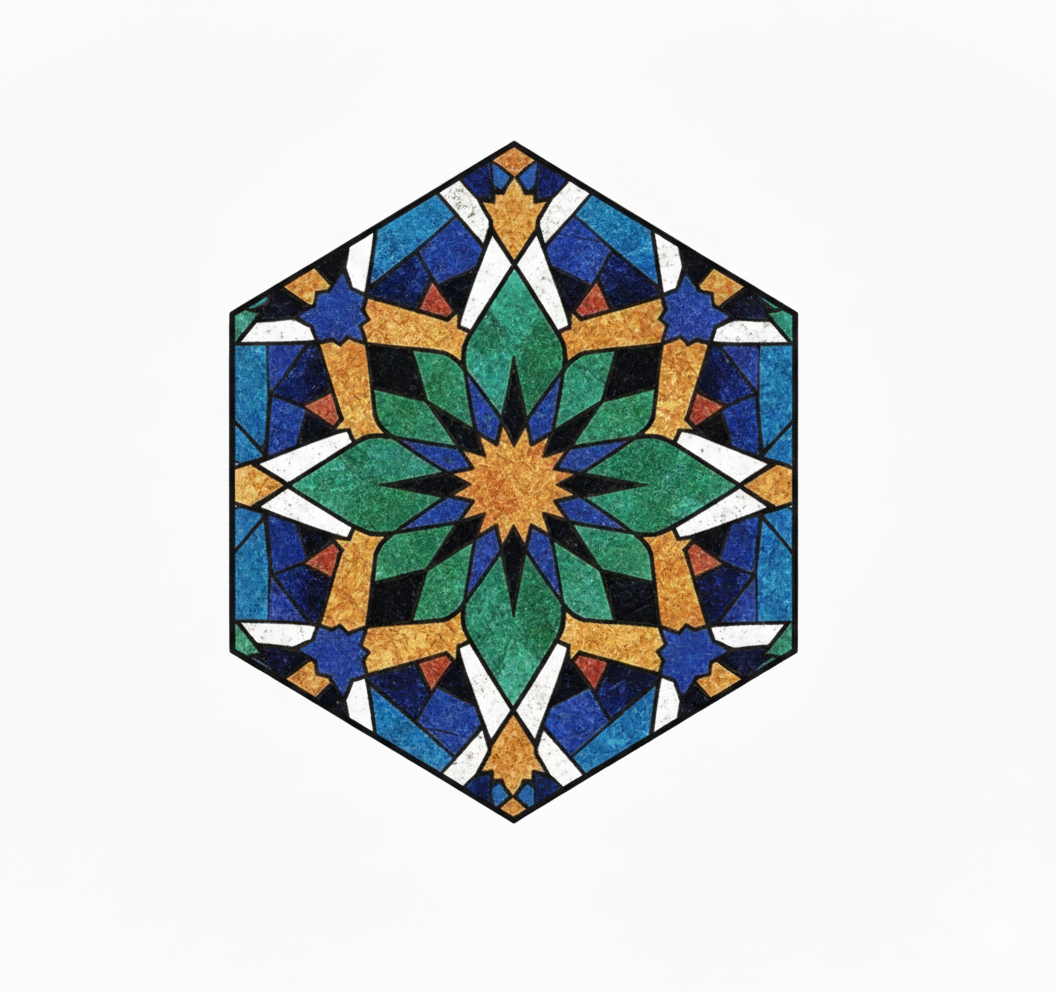
dirham zellij
Dirham uses square and rectangular tiles to form symmetrical and balanced designs, often framing doors, windows, and fountains. This style emphasizes structure and proportion, creating a strong sense of order. Iconic examples of Dirham zellij can be found in the Ben Youssef Madrasa in Marrakech, highlighting its versatility and enduring appeal.

Experiencing Moroccan Decorative Arts in Riads, Palaces, and Courtyards
To truly appreciate The Art of Decoration in Moroccan Architecture, there is no better way than to explore riads, palaces, and courtyards, where decorative mastery comes to life. In cities like Fes, visitors can wander through ancient riads adorned with intricate zellij tiles, carved cedar ceilings, and stucco motifs, experiencing the harmony of traditional Moroccan craftsmanship up close. In Marrakech, the serene courtyards of historic palaces and riads showcase tadelakt plaster, ornate fountains, and arabesque patterns, blending artistry with relaxation and social gathering spaces. Even in Rabat and Meknes, exploring royal palaces and public squares reveals how decoration enhances both functional and ceremonial architecture, illustrating Morocco’s dedication to beauty, symbolism, and cultural heritage. Travelers seeking a full immersive experience can combine these visits with guided tours such as the Imperial City Tour from Fes, ensuring they witness the finest examples of Moroccan decorative arts while understanding their historical and cultural context.
Discover the magic of Moroccan decoration!
Contact Holiday Morocco Tours to plan your immersive journey through Morocco’s architectural masterpieces, from exploring intricately decorated riads and palaces to discovering the finest zellij, stucco, and cedarwork in historic cities.
Experiencing Moroccan Zellij Up Close in Riads, Palaces, and Fountains
The true beauty of Moroccan zellij is best appreciated by exploring riads, palaces, and fountains where these mosaics come to life. In Fes, walking through historic riads and madrasas allows travelers to observe the precision of Hatim Zellij and the intricate density of Luzza, experiencing firsthand the craftsmanship passed down through generations. Marrakech offers equally immersive experiences in palaces and courtyards, where Kwayra’s flowing motifs and Dirham’s balanced patterns create spaces that are both visually stunning and spiritually evocative. Even public fountains and squares in Rabat and Meknes feature Saft and Mharra mosaics, demonstrating the decorative and functional roles of zellij in Moroccan urban design. Guided tours such as the Imperial City Tour from Fes provide travelers with the opportunity to explore these masterpieces in context, gaining insight into their historical, cultural, and symbolic significance. Experiencing Moroccan zellij up close allows visitors to fully appreciate the skill, patience, and artistry that have made this decorative art a timeless emblem of Moroccan heritage.
Experiencing Moroccan Zellij Up Close in Riads, Palaces, and Fountains
The true beauty of Moroccan zellij is best appreciated by exploring riads, palaces, and fountains where these mosaics come to life. In Fes, walking through historic riads and madrasas allows travelers to observe the precision of Hatim Zellij and the intricate density of Luzza, experiencing firsthand the craftsmanship passed down through generations. Marrakech offers equally immersive experiences in palaces and courtyards, where Kwayra’s flowing motifs and Dirham’s balanced patterns create spaces that are both visually stunning and spiritually evocative. Even public fountains and squares in Rabat and Meknes feature Saft and Mharra mosaics, demonstrating the decorative and functional roles of zellij in Moroccan urban design. Guided tours such as the Imperial City Tour from Fes provide travelers with the opportunity to explore these masterpieces in context, gaining insight into their historical, cultural, and symbolic significance. Experiencing Moroccan zellij up close allows visitors to fully appreciate the skill, patience, and artistry that have made this decorative art a timeless emblem of Moroccan heritage.
Bring the Beauty of Moroccan Zellij to Your Journey
Exploring Moroccan zellij offers travelers a window into Morocco’s rich history, artistic mastery, and cultural heritage. From the intricate Hatim patterns of Fes to the flowing Kwayra mosaics of Marrakech, every piece tells a story of craftsmanship, spirituality, and centuries of tradition.
Don’t just admire these mosaics from afar. Let Holiday Morocco Tours craft your personalized journey through Morocco’s riads, palaces, madrasas, and fountains, where you can experience Moroccan zellij up close. Witness artisans at work, explore historic sites, and immerse yourself in the timeless art of Moroccan decorative architecture, making your Moroccan adventure truly unforgettable.
